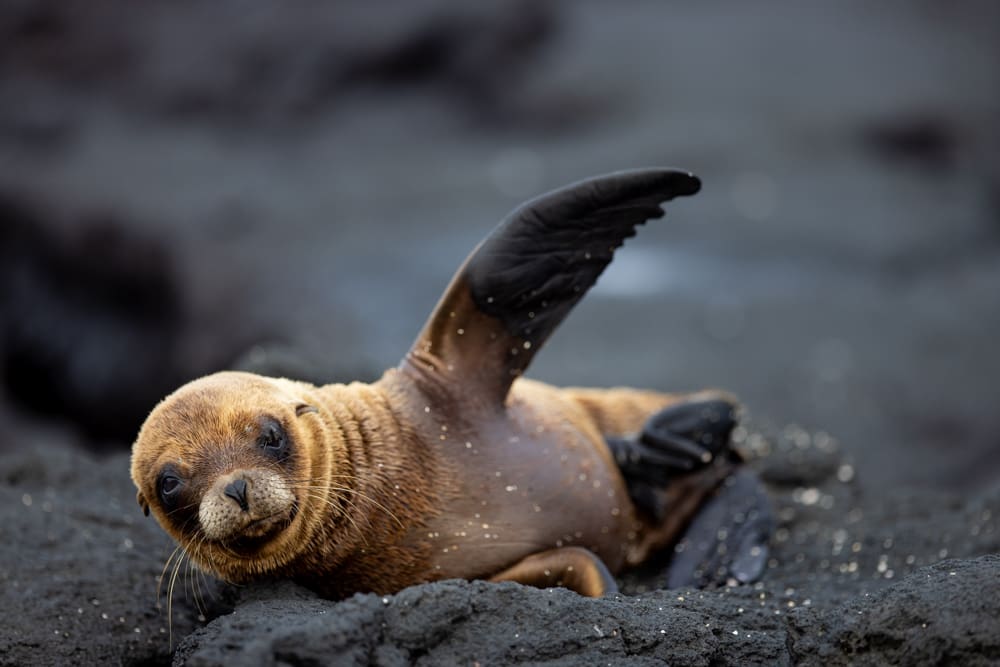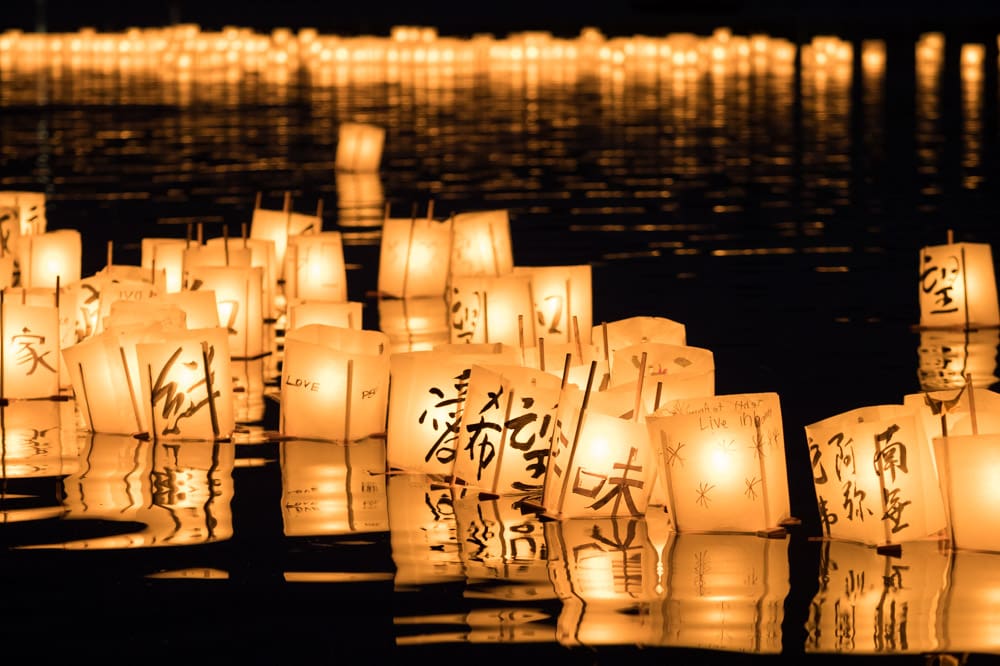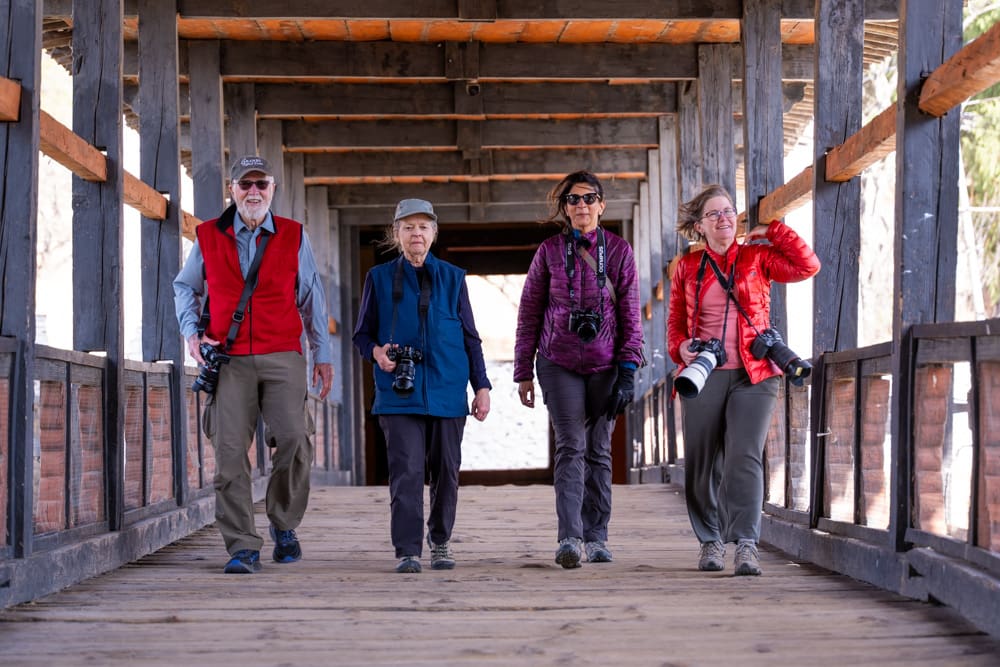Creating an original photography tour from scratch is proving to be more time intensive than imagined. Over the years I’ve lead many photo tours to inspiring destinations like: Cuba, Bhutan, Kenya, Turkey, Jordan, and the Galapagos Islands. On all previous tours the schedule and layout of the tour was partial in place before I and my tour participants came along.
The upcoming Australia Photography Tour is different; every element is being pieced together into a one-of-a-kind experience. Yes, there have been many photo tours in Australia and Sydney well before I came along. But this one is different, every element has been planned, discussed and debated by me and my team, in depth.
Having a wife from Australia, and having visited the country myself on numerous occasions over many years, I’ve had a great opportunity to see the land from a fresh perspective as well as from a more experienced point of view.
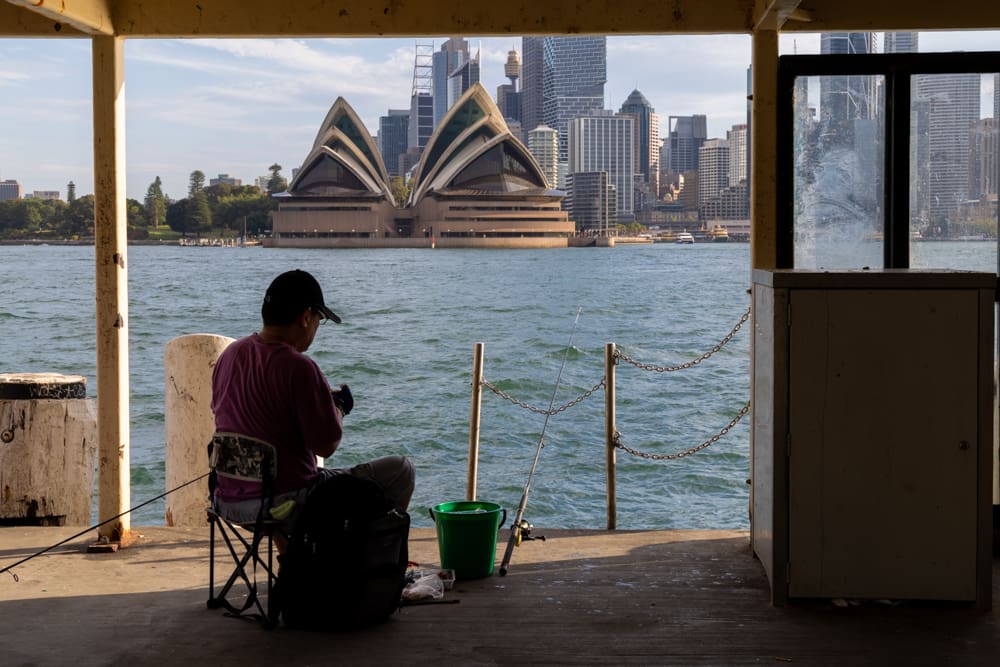
Canon R5 Mark II, RF 24-105MM F/4.0 L IS USM @ 50MM | F/16 | 1/40 SEC | ISO 100
Traveling to Australia
The first obvious fact about Australia is that it is huge; relatively close in total area to the USA or Canada. When planning a 10-14 day tour of the land down under, it’s obvious you aren’t going to see it all, or even most of it. Instead, your best hope is to see a good slice.
When I think about travel planning, the first things that come to mind are: coverage and depth. While I would like to see as much as possible, I don’t want to be sprinting my way from one location to another with little to no time to enjoy the places I’m visiting. Getting the correct balance of coverage and depth is the first key to travel planing.
Australia has many attractions, and unfortunately many of them are spread out across an entire continent. You could spend a lifetime exploring the region only to need several more lifetimes to complete the task. To truly see Australia you will undoubtedly need to break the task into more manageable sections with a clear focus for each one.

Canon R5 Mark II, RF 24-105MM F/4.0 L IS USM @ 70MM | F/11 | 1/100 SEC | ISO 100
Sydney
Australia’s largest city and most popular point of entry is a great place to start. Sydney offers a great introduction to Australia, especially for American travelers. About the same size as Los Angeles as well as being at approximatey the same latitude, Sydney is an easy city to start your southern adventure. While the greater Sydney area is huge, many of the must-see photographic attractions are well within walking distance in CBD (Central Business District).

St Mary’s Cathedral
Canon R5 Mark II, RF 14-35MM F/4.0 L IS USM @ 18MM | F/4.0 | 1/5 SEC | ISO 400
From a centrally-located downtown hotel you could spend days exploring the nearby areas: Circular Quay, Sydney Opera House, Sydney Harbour Bridge, Royal Botanic Garden, The Rocks, Barangaroo, Hyde Park and so much more.
I’ve spent many weeks walking around this region exploring the streets, parks and public spaces and found a number of locations that are great photographic experiences either for a singular great image or a variety of compositions.

Canon R5 Mark II, RF 24-105MM F/4.0 L IS USM @ 35MM | F/8 | 2.5 SEC | ISO 100
Sydney’s greatest strength from a photographic standpoint is Sydney Harbour and the multitude of inlets, points, and many miles or kilometers of shoreline. A vast park system with a staggering amount of public access to waterfront views provides lots of options for panoramic vistas, which are ideal during sunrise and sunset.
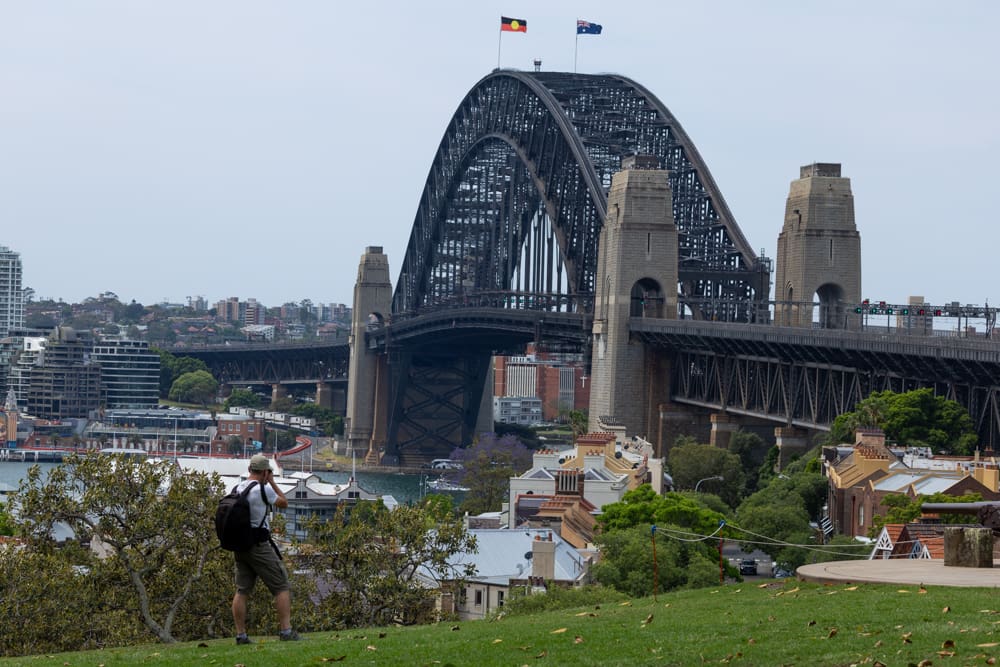
Canon R5 Mark II, RF 100-500MM F/4.5-7.1 L IS USM @ 100MM | F/8 | 1/320 SEC | ISO 100
[Photo Credit: Michelle Greengo]
The coastline
Venturing beyond Sydney offers you basically two choices: the coastline and the interior. With nearly 90% of the Australian population living within 35mi/50km of the coast, you’ll want to spend some time there to have a truly Australian experience. Scenic roads, small towns, and surfing are just the start of what to expect. Several regions have become established locations for road trips and excursions, such as the Great Barrier Reef coastline, Sunshine Coast, Gold Coast, Central Coast, Grand Pacific Drive, and NSW south coast; and these are just the ones on the east coast.
From a publicity point of view, beaches get all the attention, but for the photographer the more rugged coastlines provide more dramatic content. Between the plentiful sandy beaches are rocky coastlines with ledges that extend out into seas with crashing waves all around, ideal content for dramatic seascapes.
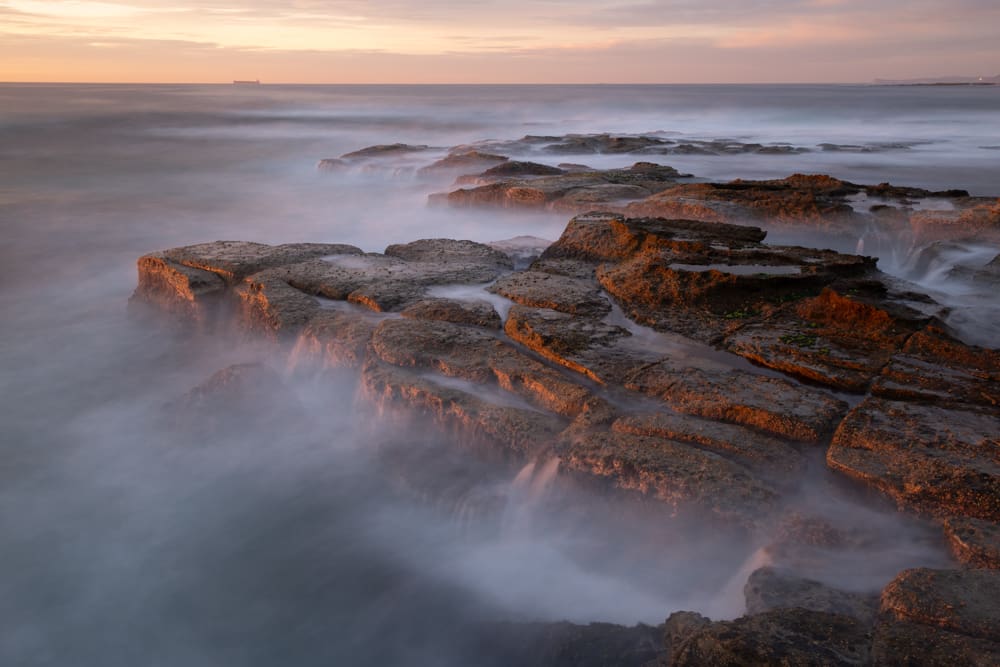
Canon R5 Mark II, RF 24-105MM F/4.0 L IS USM @ 30MM | F/16 | 25 SEC | ISO 100
At most every sandy beach you’ll find a local volunteer Surf Life Saving Club (or Surf Club) that regularly patrols the beaches and waters and stands by ready in case of emergency. When water conditions are tolerable, two red & yellow flags will be raised to designate the zone of water that will be patrolled by the volunteers. The rule is, swim between the flags if you know what’s good for you.

Nippers (Junior Surf Life savers of the future) participating in an inter-club race
Canon R5 Mark II, RF 100-500MM F/4.5-7.1 L IS USM @ 270MM | F/6.3 | 1/2000 SEC | ISO 400
Photography along the coastline can result in a mix of subjects and genres. The aforementioned rocky ledges are great for landscapes and seascapes with slow or fast shutter speeds. The sandy beaches provide an open environment for practicing a variety of composition techniques. In the mornings you may find surfers or members of the Surf Club running exercises to keep their volunteers in top condition. A longer lens of 400-500mm (full-frame) will be more than enough to capture the action around the waves and shoreline.
From a photo tour perspective, the big problem with the Australian coastline is that it just goes on and on and on. You can stop at most any location and find something to photograph, but some areas are especially rich with content, and that’s were you want to spend the bulk of your time. Finding appropriate lodging accommodations along with restaurants in the same location as those shooting spots is where piecing together a photo tour gets a little tricky. Balancing shooting time and drive time becomes more complicated when you start factoring in hotel and eating options. I’ve spent days driving up and down the coast evaluating various locations, going out for test shoots and eating in lots of restaurants.
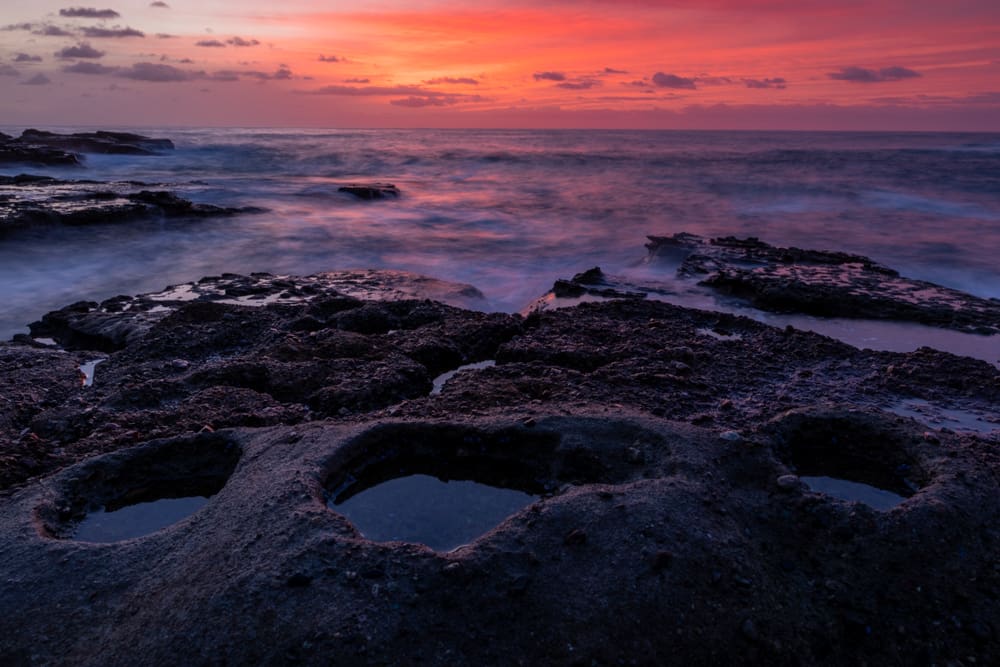
Canon R5 Mark II, RF 14-35MM F/4.0 L IS USM @ 24MM | F/16 | 2.5 SEC | ISO 100
Inland
Beyond the coast lies the vast expanse of the interior of Australia. A huge number of options present themselves to any traveler, but if you keep in mind the balance between commuting time and photography time, one of the wisest options is the Blue Mountains, which lay only a couple of hours out of Sydney.
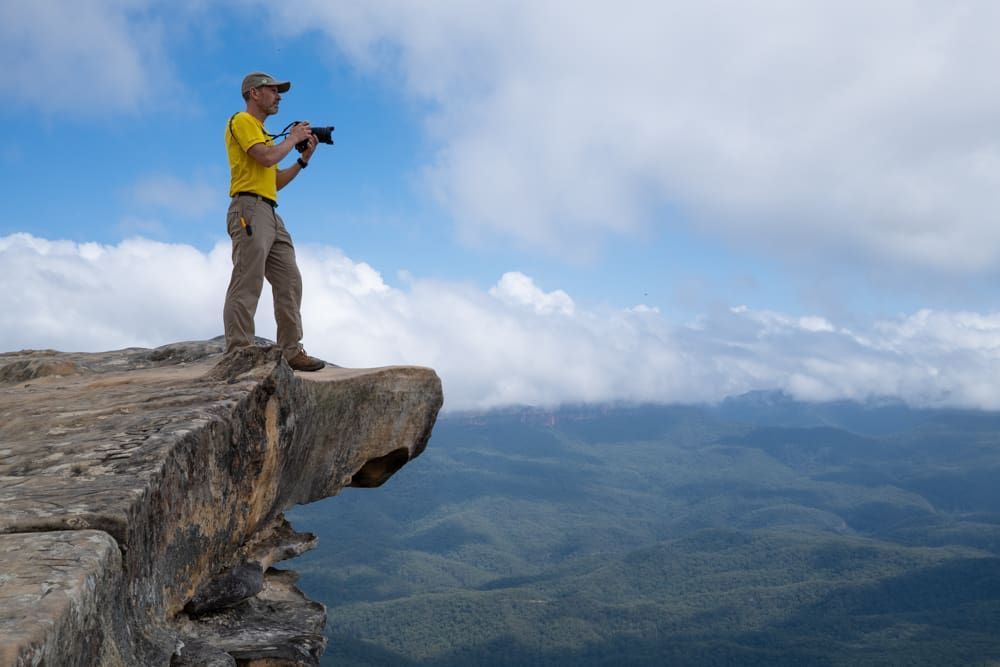
Fujifilm X100 VI @ 23MM | F/8 | 1/400 SEC | ISO 125
[Photo Credit: Michelle Greengo]
On my first trip out of Sydney and into the Blue Mountains I was looking for the mountain peaks as I might do in my home region of the Pacific Northwest. From my home in the Seattle area we can spot volcanic mountain tops upwards to a hundred miles away. The mountains of Australia are different, they aren’t volcanic and don’t feature the jagged slopes or high peaks of the Cascade or Olympic mountain ranges in Washington state.
The Blue Mountains, which is part of the 3,500km (2,175 miles) long Great Dividing Range, offers a completely different mountain experience, one of plateaus and valleys, which requires a slightly different photographic approach. I find the Blue Mountains to be more like the Grand Canyon, in that you start on a high plateau (3000ft/1000m), and then descend by foot into the valleys. Unlike the Grand Canyon in the dry desert of Arizona, the Blue Mountains are lush with green foliage and frequently wet, not unlike a rain forest.
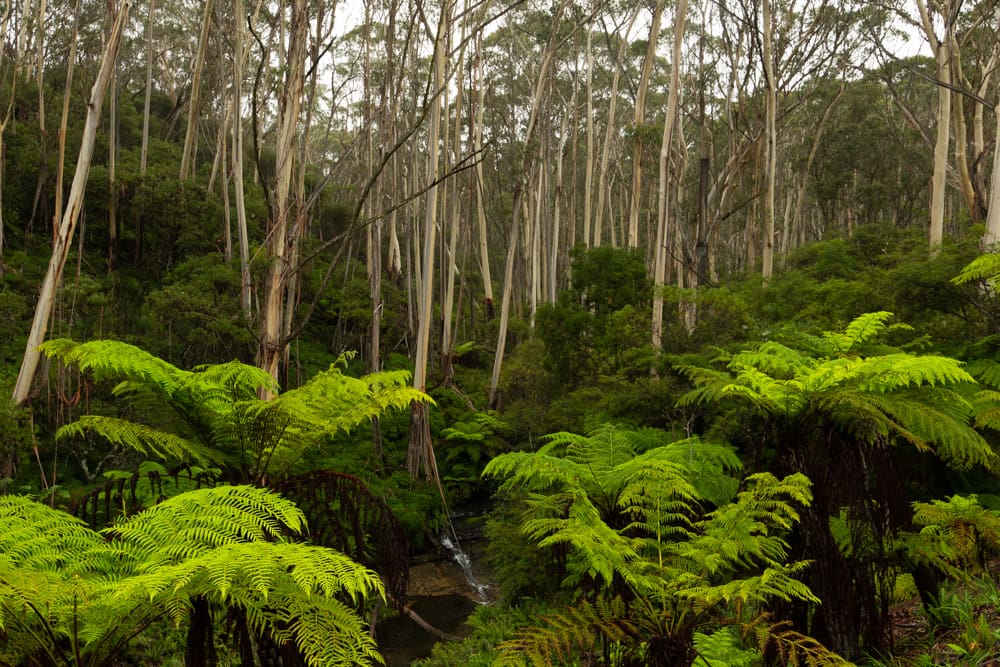
Canon R1, RF 14-35MM F/4.0 L IS USM @ 35MM | F/8 | 1/15 SEC | ISO 400
The highlights of these mountains are valley views, rim-traversing trails, and stairs that lead you down to the valley floor. From the main highway that crosses the region, a network of roads and trails will take you to trails that access the valleys and gorges on either the northern or southern side of the highway. If you want to shoot sunrise you head one direction, want to shoot sunset head the other way, or if you want to shoot waterfalls you can head just about any direction at all.
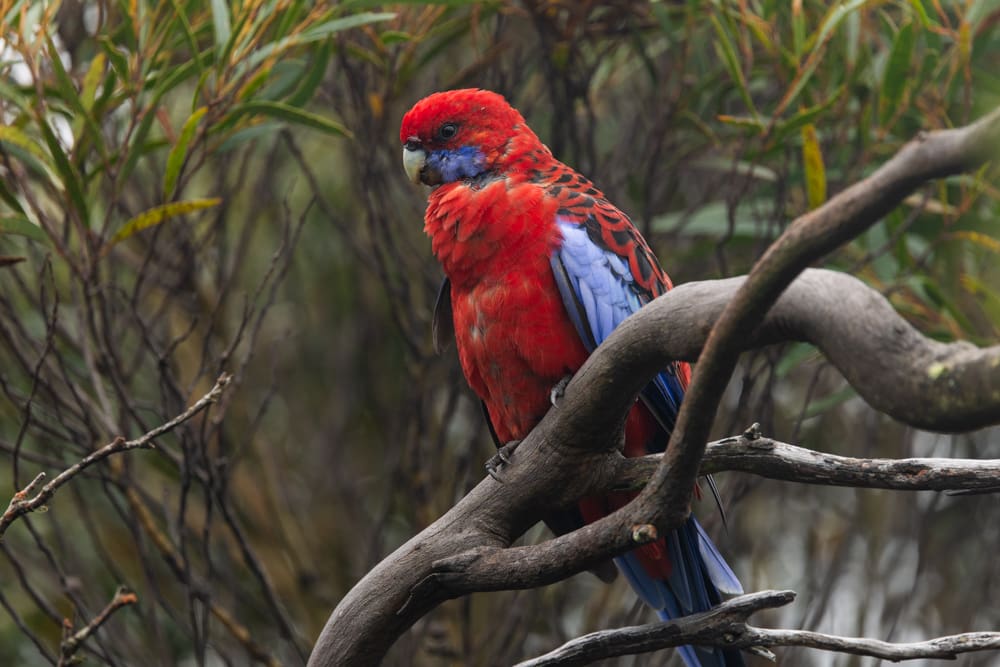
Crimson Rosella
Canon R1, RF 100-500MM F/4.5-7.1 L IS USM @ 500MM | F/7.1 | 1/250 SEC | ISO 400
Just like the coastline, the quantity of options isn’t the problem, it’s narrowing it down to what your preference is for that day. Scouting the viewpoints and miles and miles of trails over the course of multiple trips was hard work. Oh who am I kidding, it was fantastic! Some trails were better for getting your steps in and others offered especially satisfying views and photographic opportunities. I’ve built a list of my favorite destinations and attempted to bundle them with an efficient route that maximizes the best sites and minimizes the travel time.
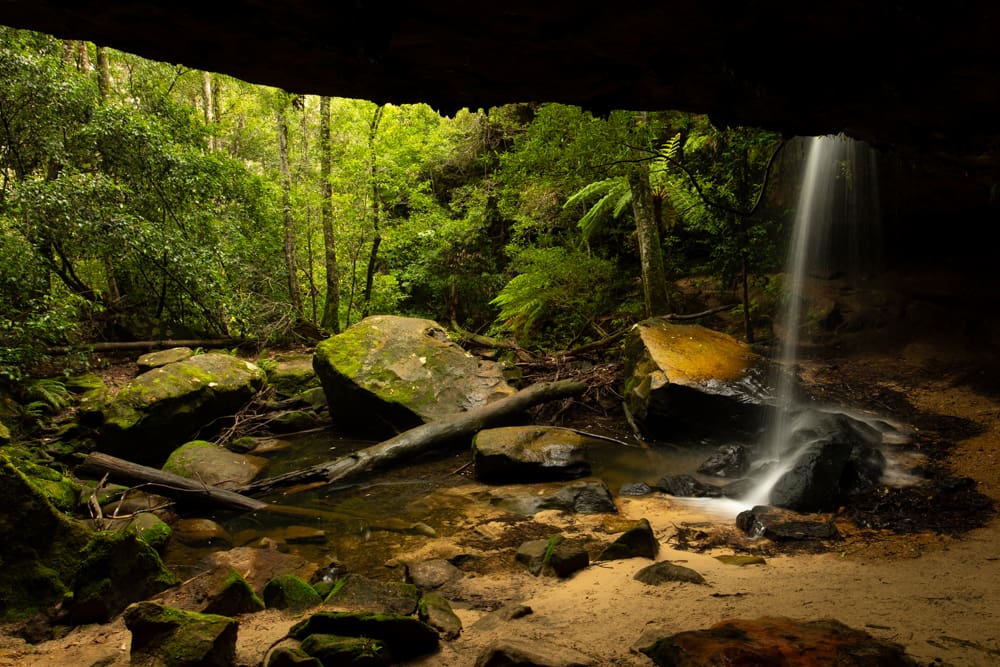
Canon R1, RF 14-35MM F/4.0 L IS USM @ 19MM | F/11 | 1.3 SEC | ISO 100
A special tour
The upcoming Australia Tour that we plan to offer, will be a special experience for me, because the local guide for our tour group will be my wife – Michelle. She was born, raised, and lived most of her life in and around the Sydney area. This is her backyard. The two of us have made repeated trips to Sydney and beyond for years, all the while talking about offering a photography tour where we package the best of what we’ve seen and done.
While not a biologist, she is an enthusiastic admirer of the native Australian flora and fauna where about 80% of the fauna and 90% of the flora is endemic to Australia. This will be a tour where a macro or close-focus lens will be highly recommended. There will be ample opportunities to photograph unique plants, birds and perhaps a kangaroo or two, or at least a wallaby.

Red Pokers Hakea
Canon R5 Mark II, RF 100-500MM F/4.5-7.1 L IS USM @ 200MM | F/5.6 | 1/200 SEC | ISO 400
A great place to start
We know that Australia holds more than can be packed into any one trip. Our hopes are to offer a tour that serves as a great start for anyone that wants to extend their stay or plans to return for further trips afield.
Stay tuned for more information about this upcoming tour. We have just returned from our final scouting trip and are tidying up our final logistics. In just a few weeks we’ll begin to offer spots on the tour and we expect it to fill quickly. If you are interested in going, you’ll want to be signed up to our monthly newsletter as that is where our first announcement will be made. If you’re interested in Australia, Sydney, and photography, this is the tour for you.
Stay tuned for more details.
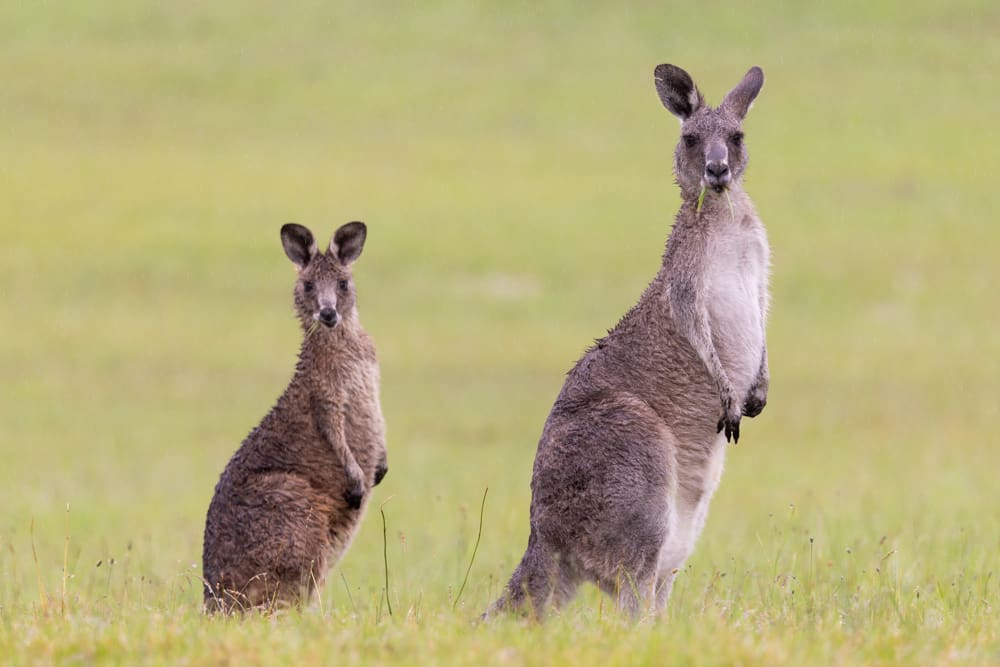
Swamp Wallaby
Canon R5 Mark II, RF 100-500MM F/4.5-7.1 L IS USM @ 500MM | F/7.1 | 1/500 SEC | ISO 400
Become part of John’s inner circle
Sign up for the newsletter here — it’s free.
Want to become a better photographer?
Check out John’s selection of photography and camera classes here.
